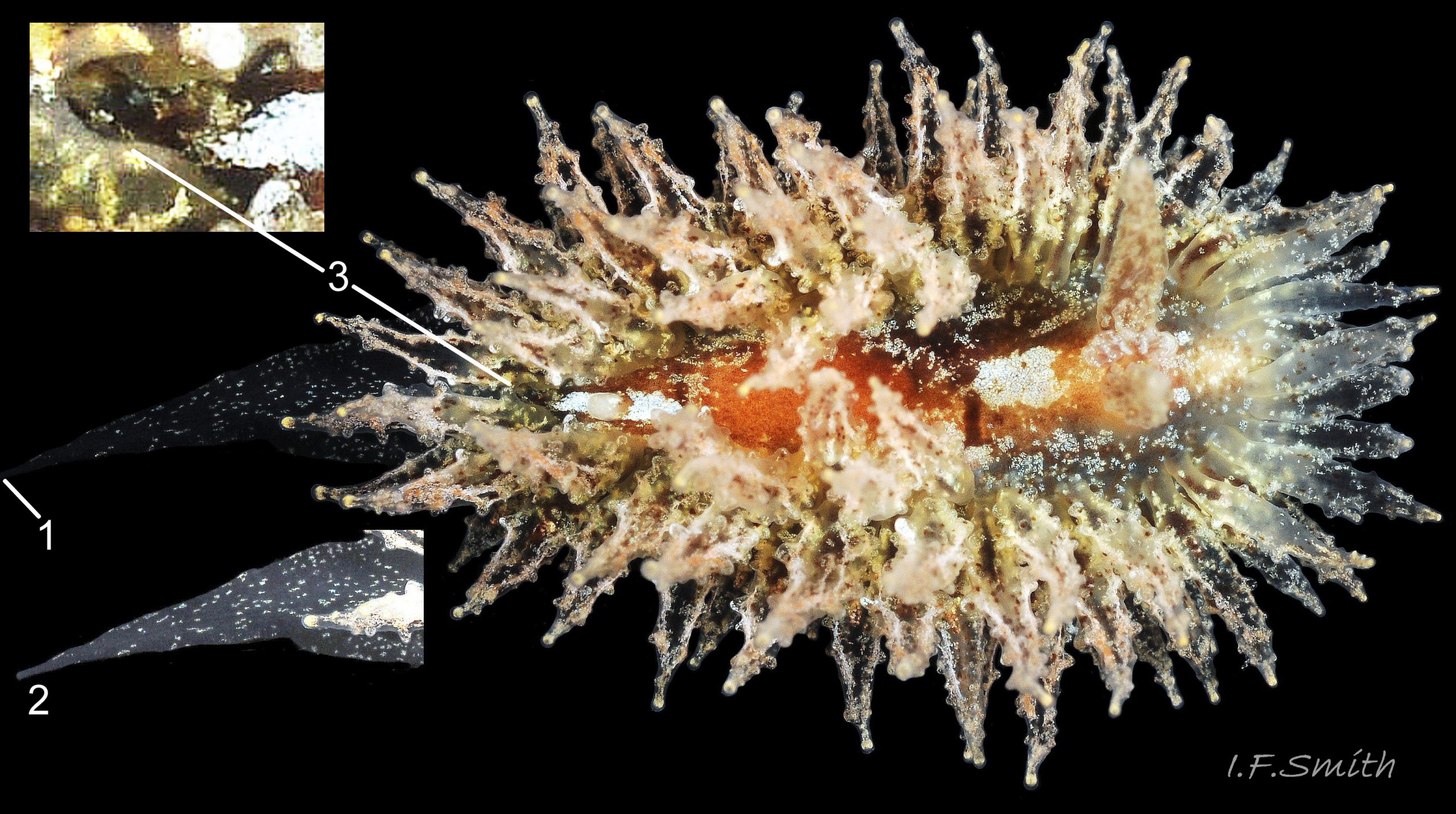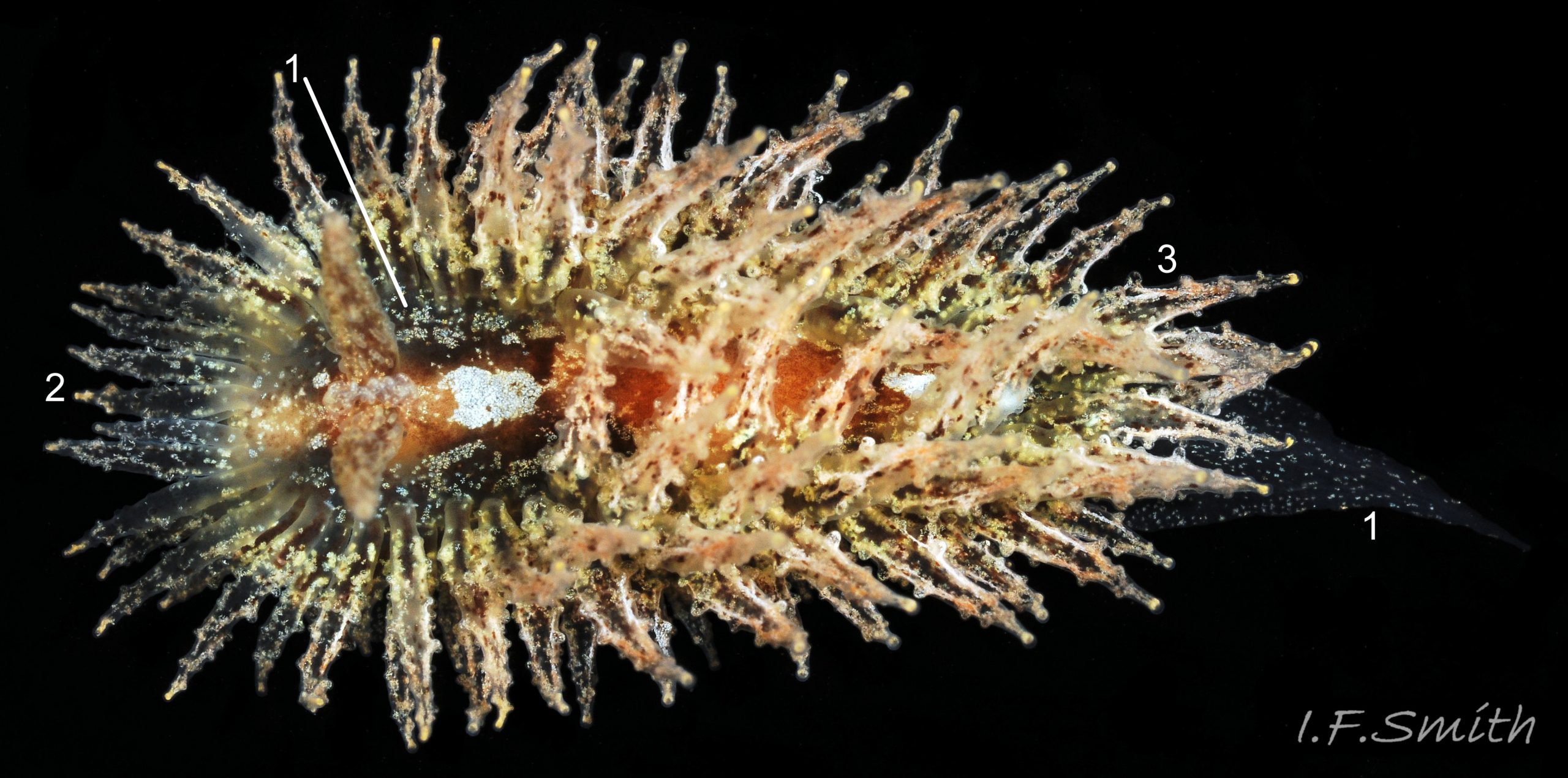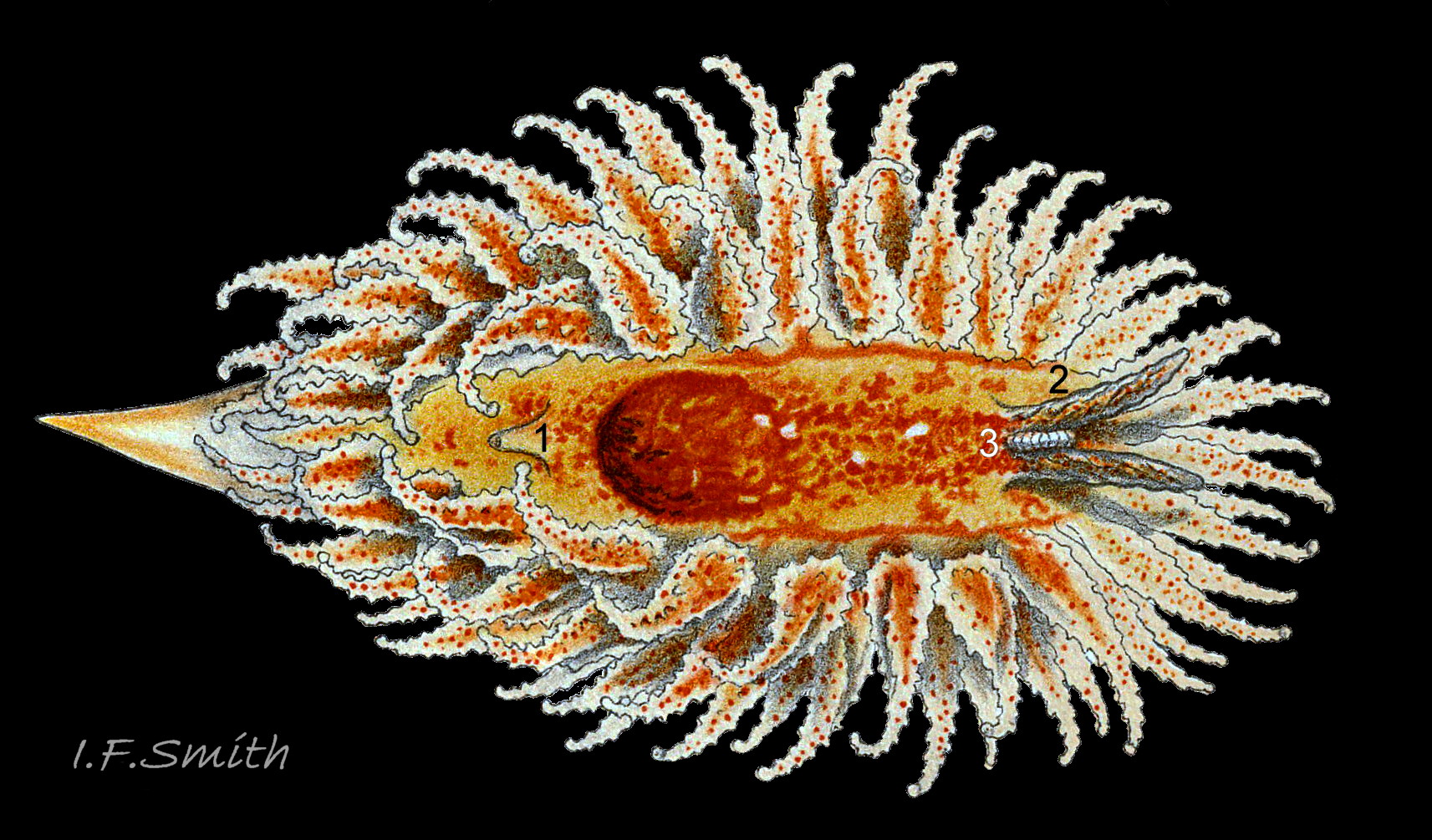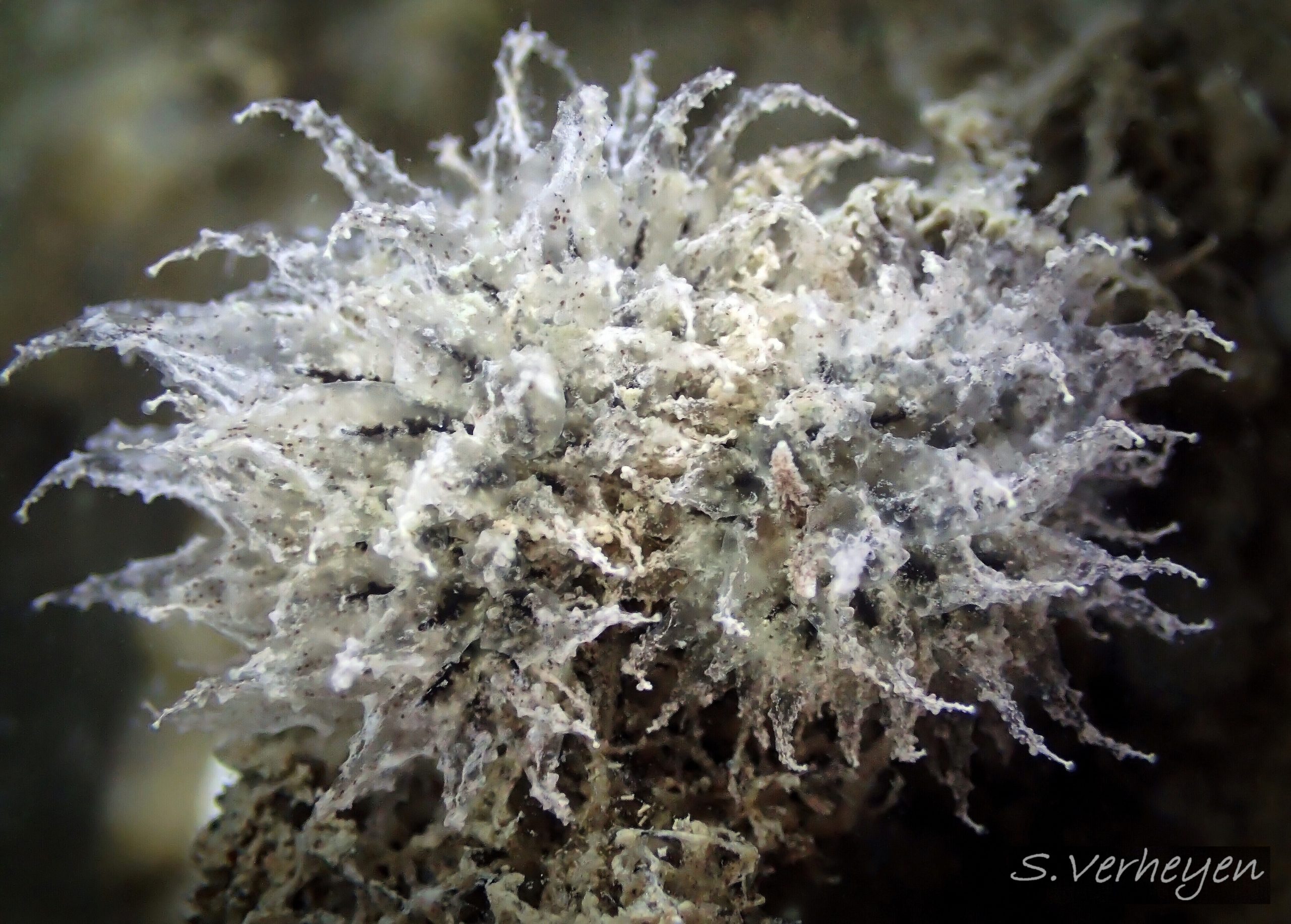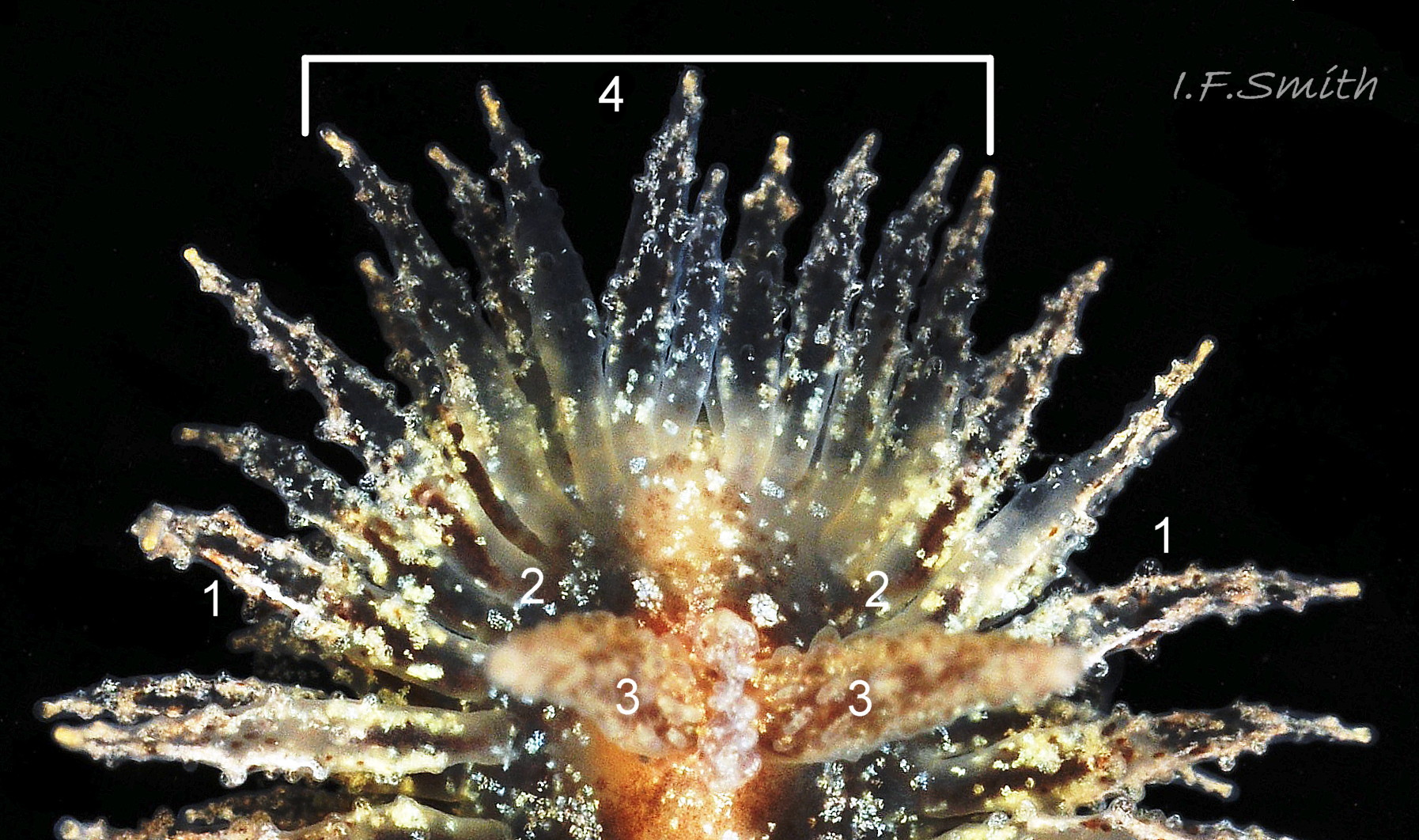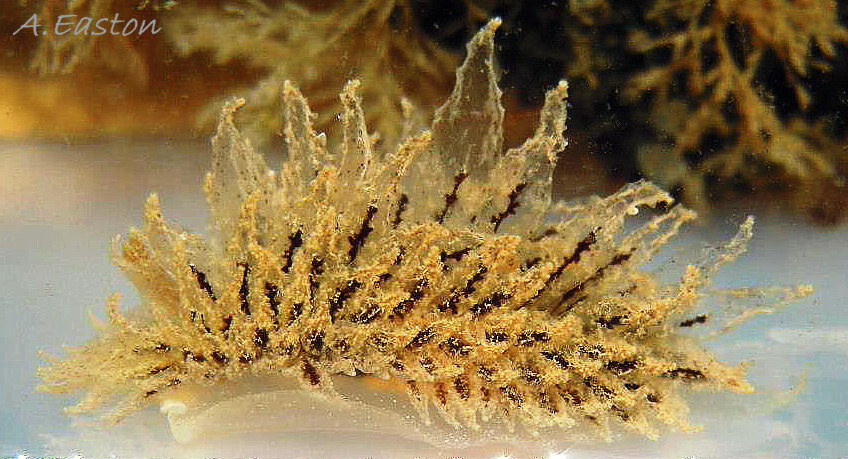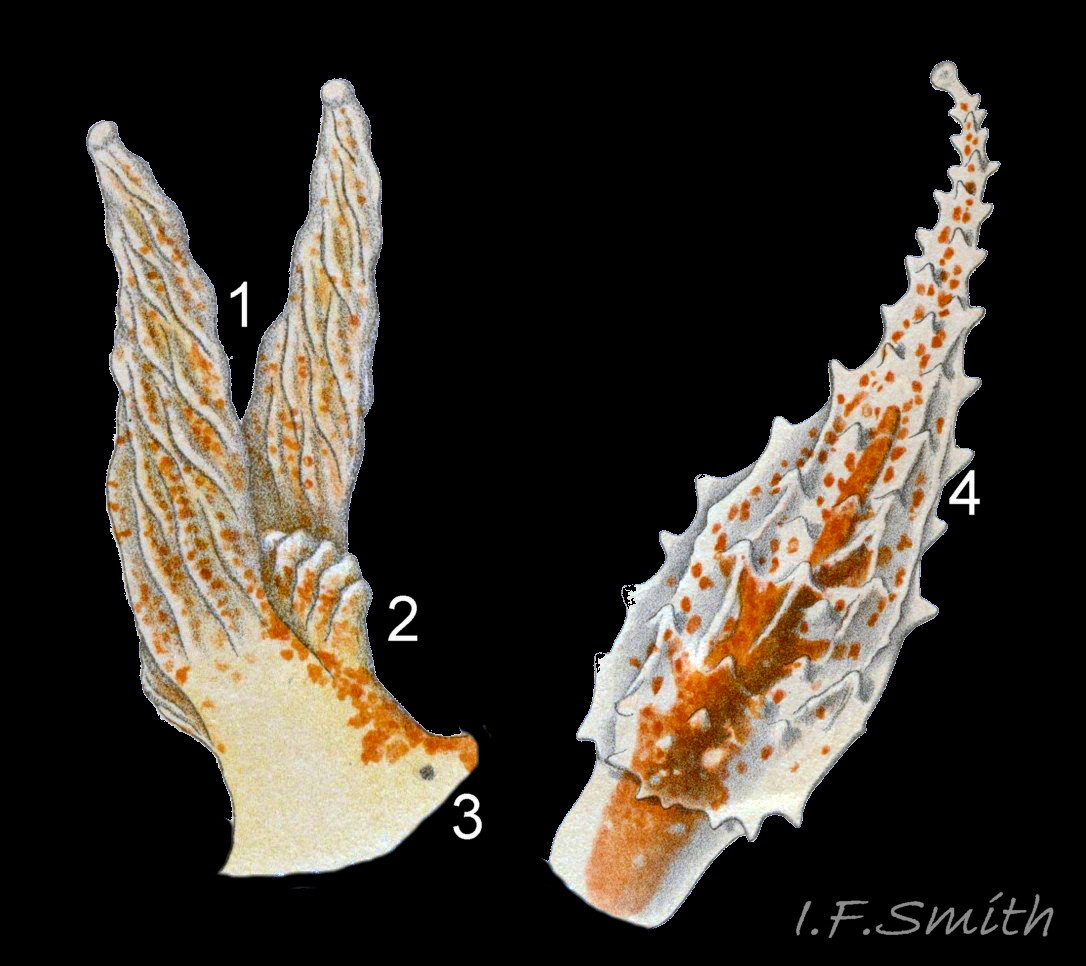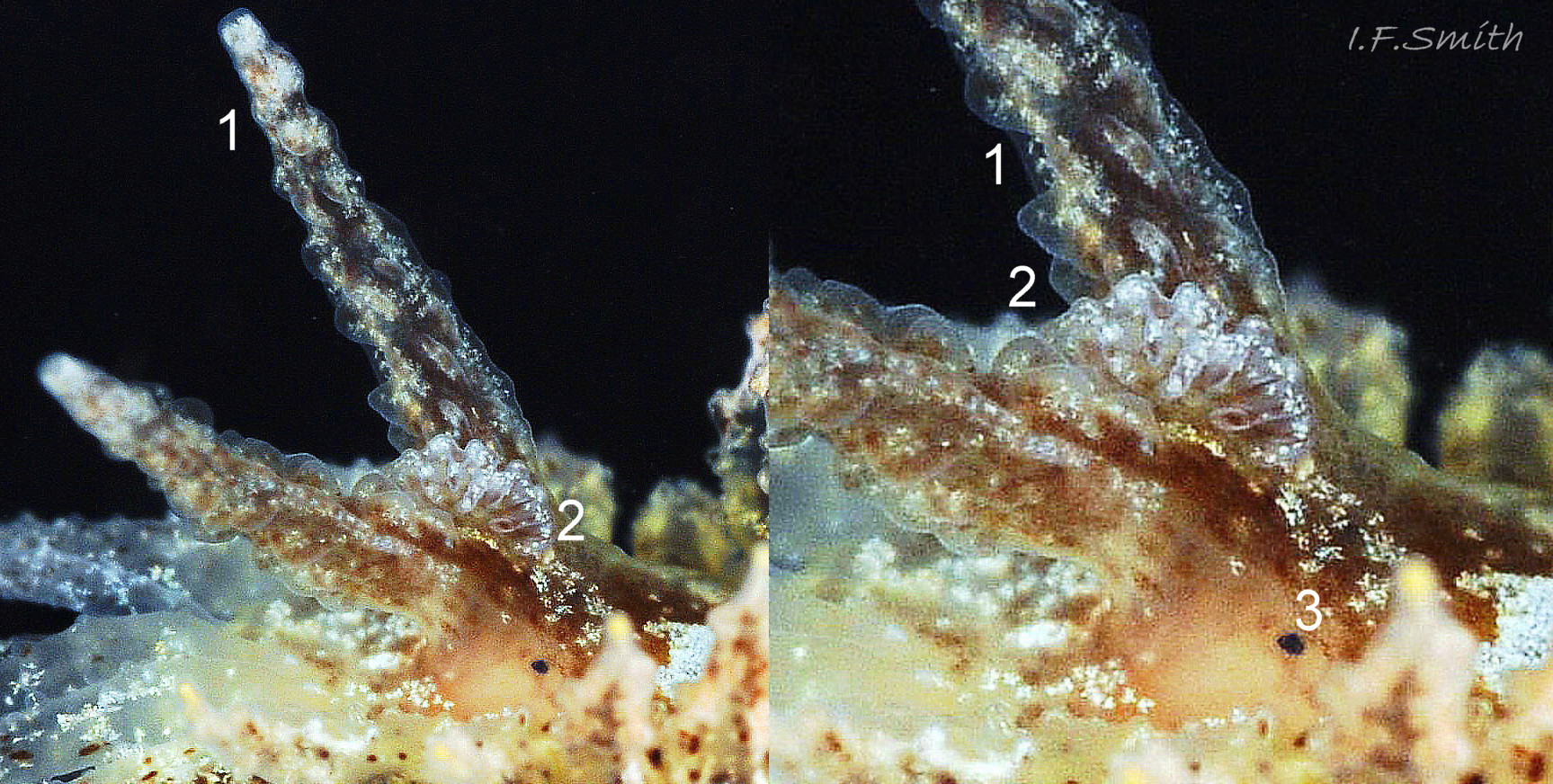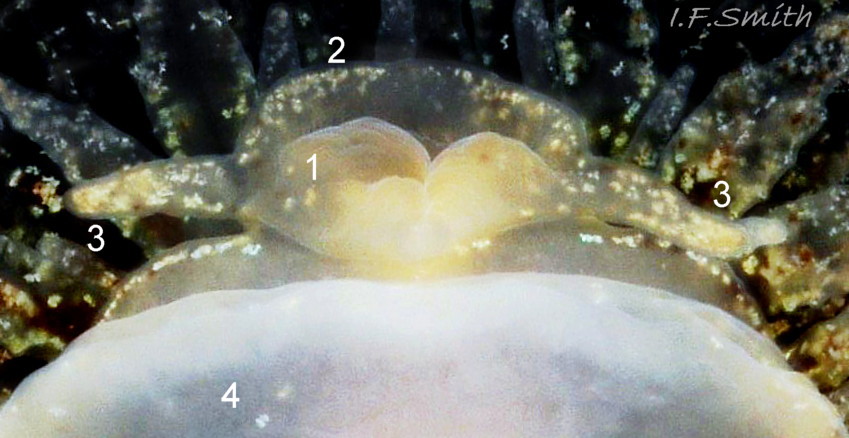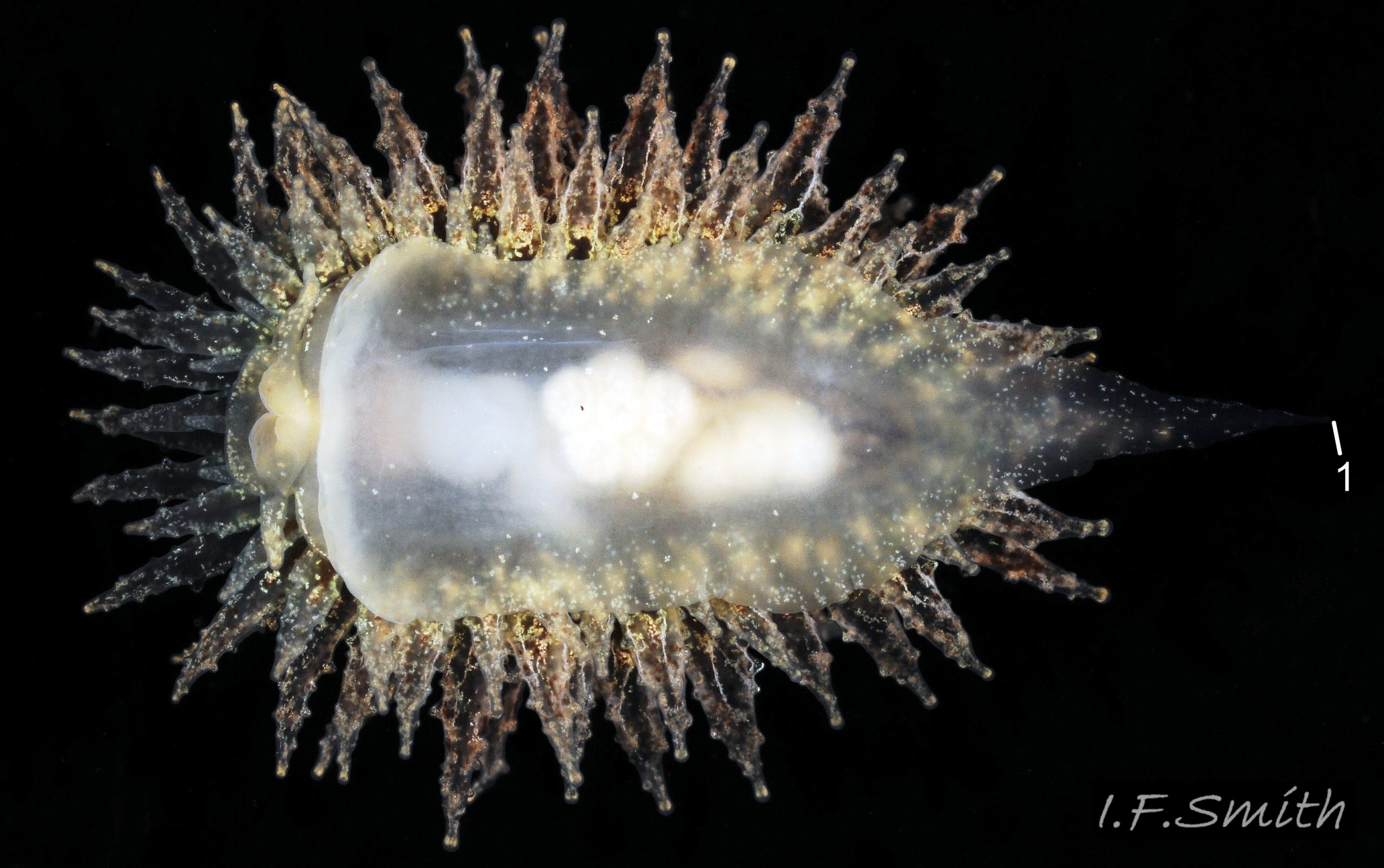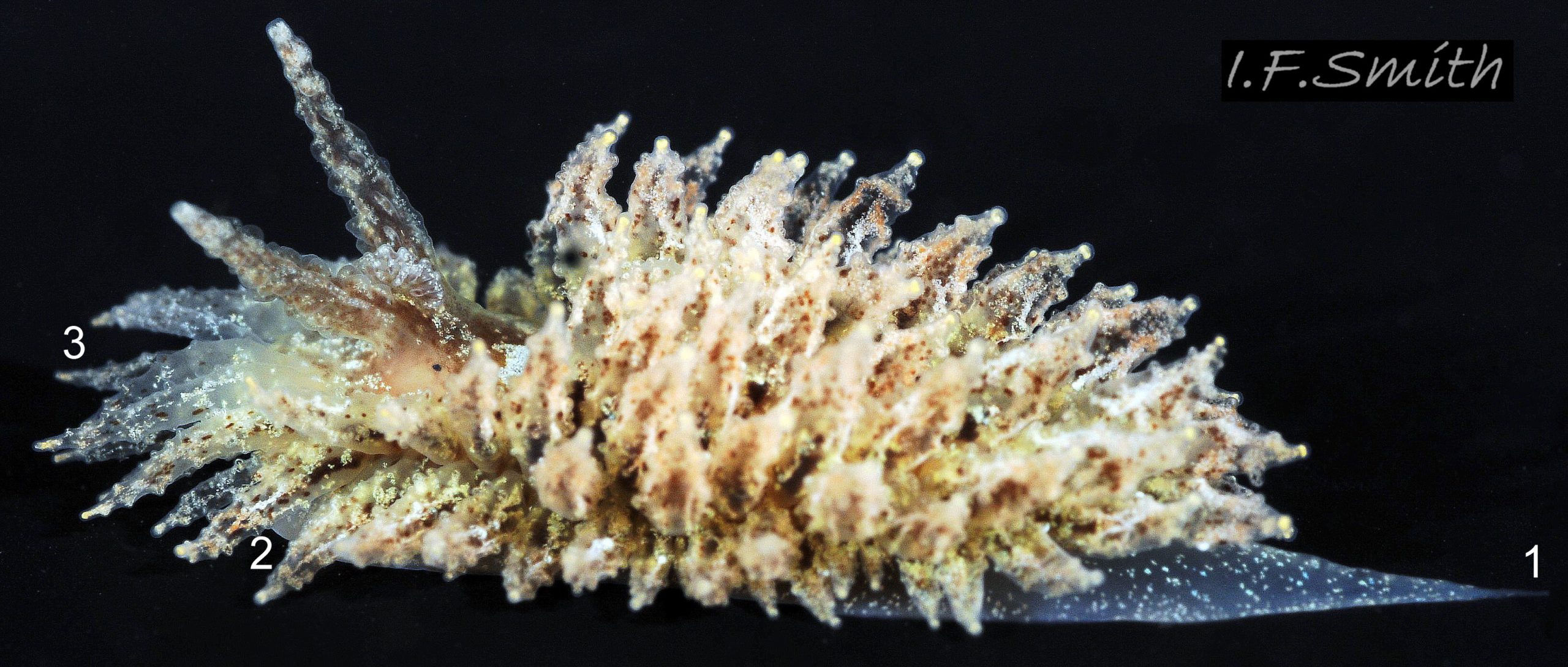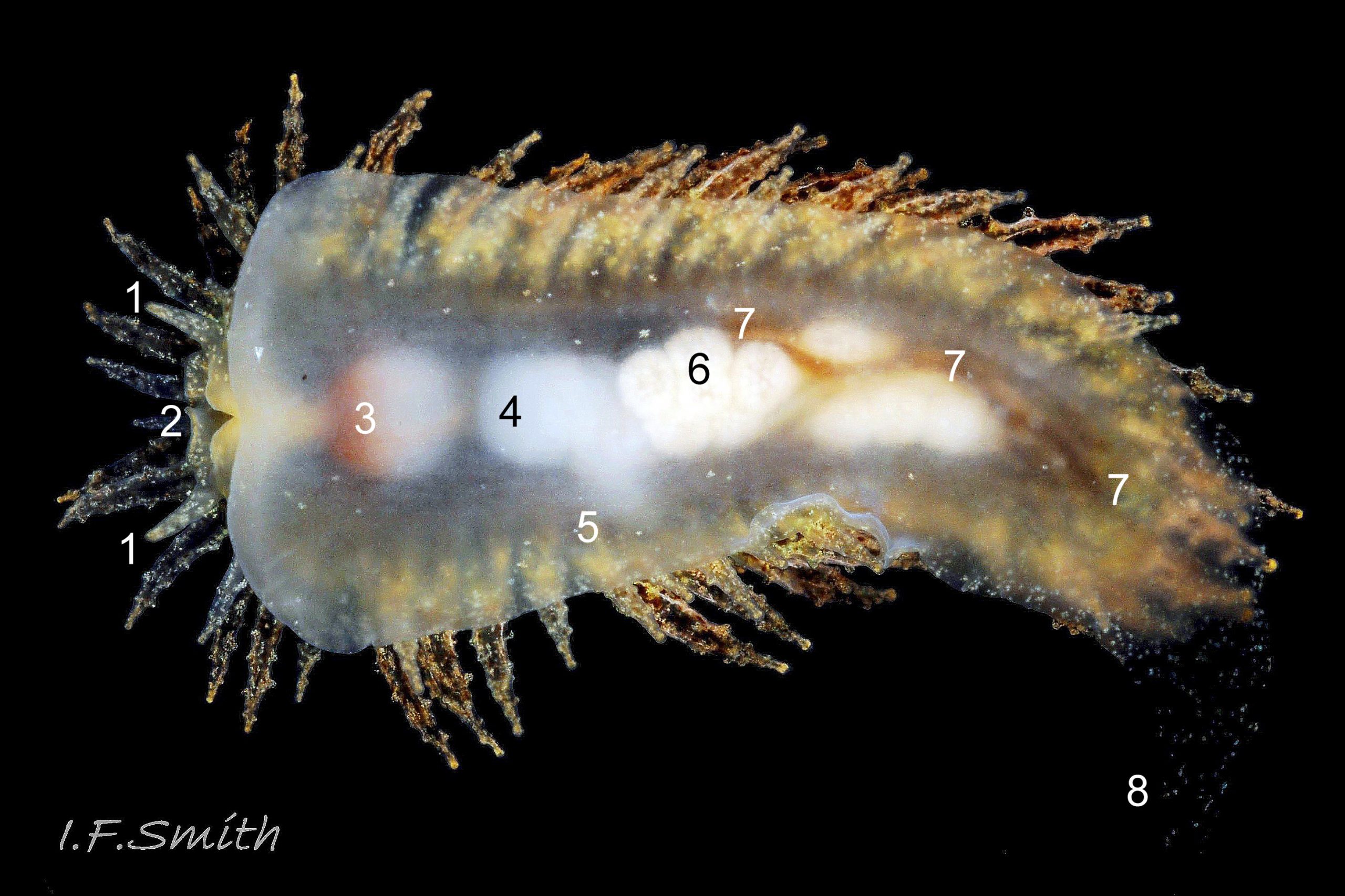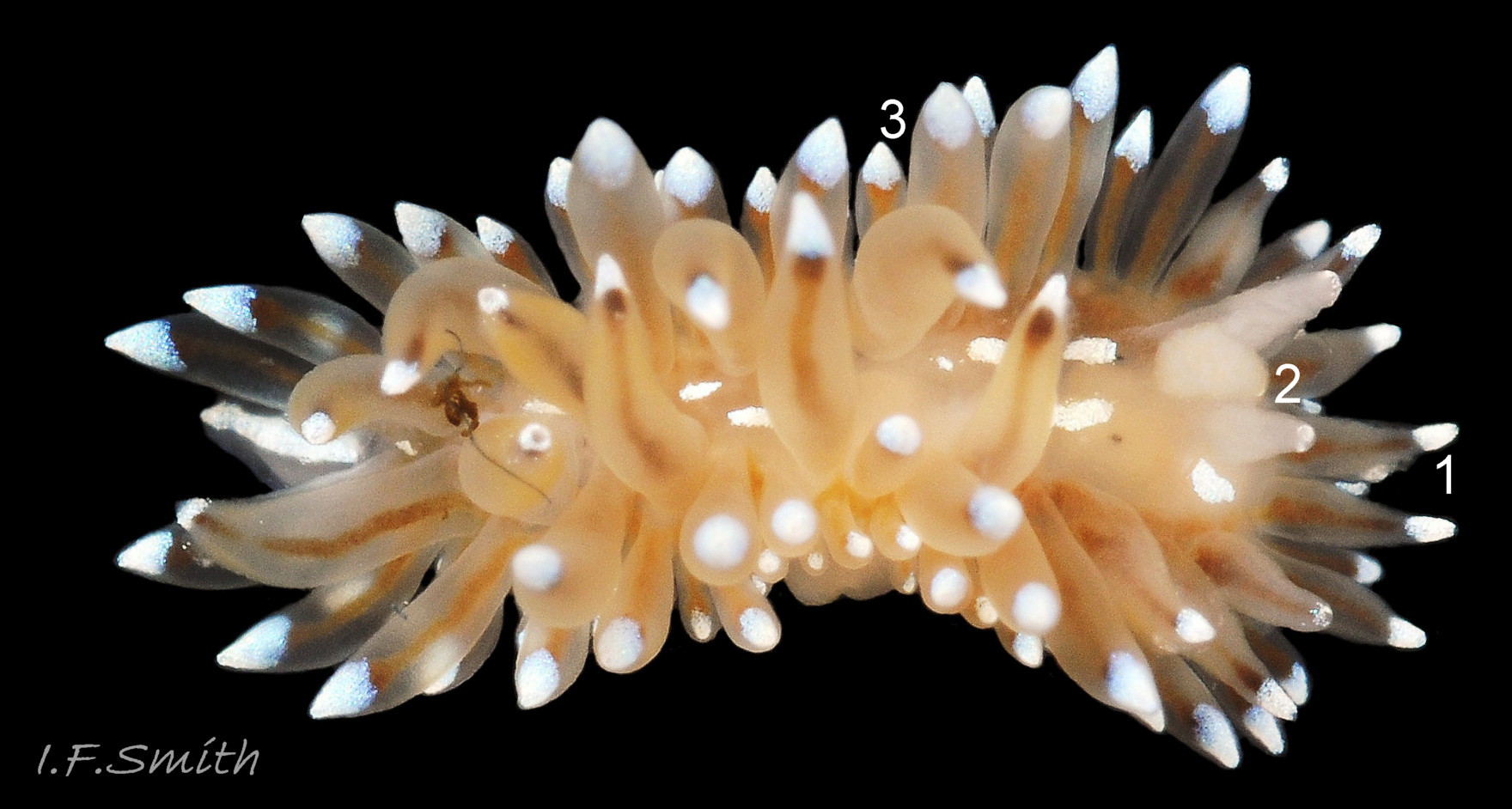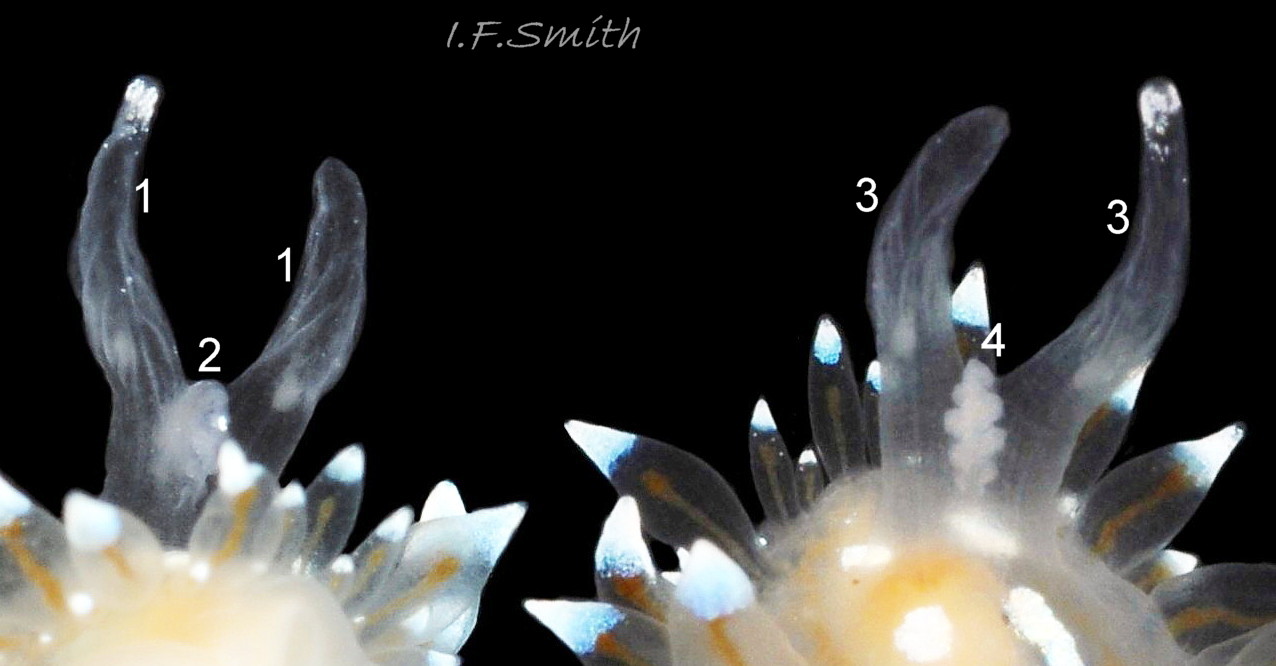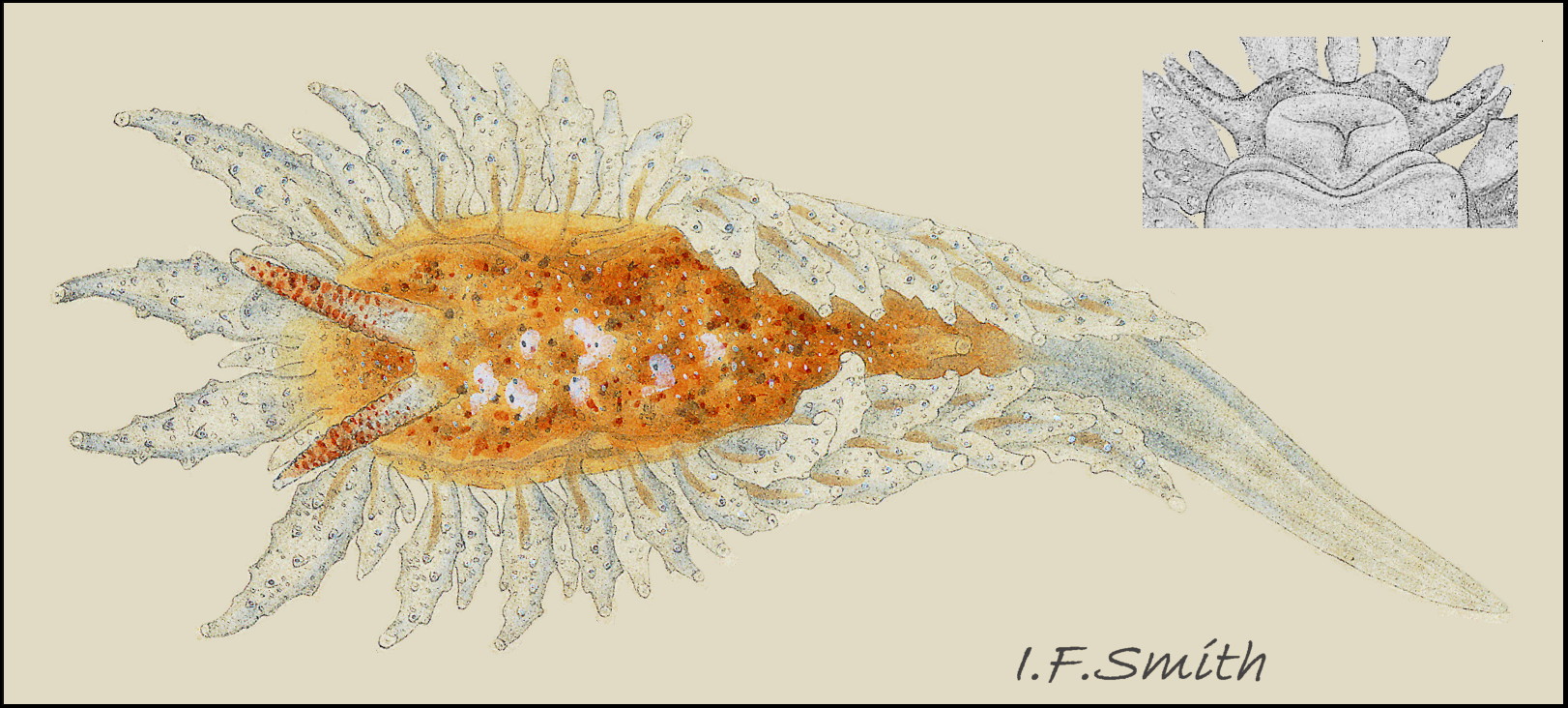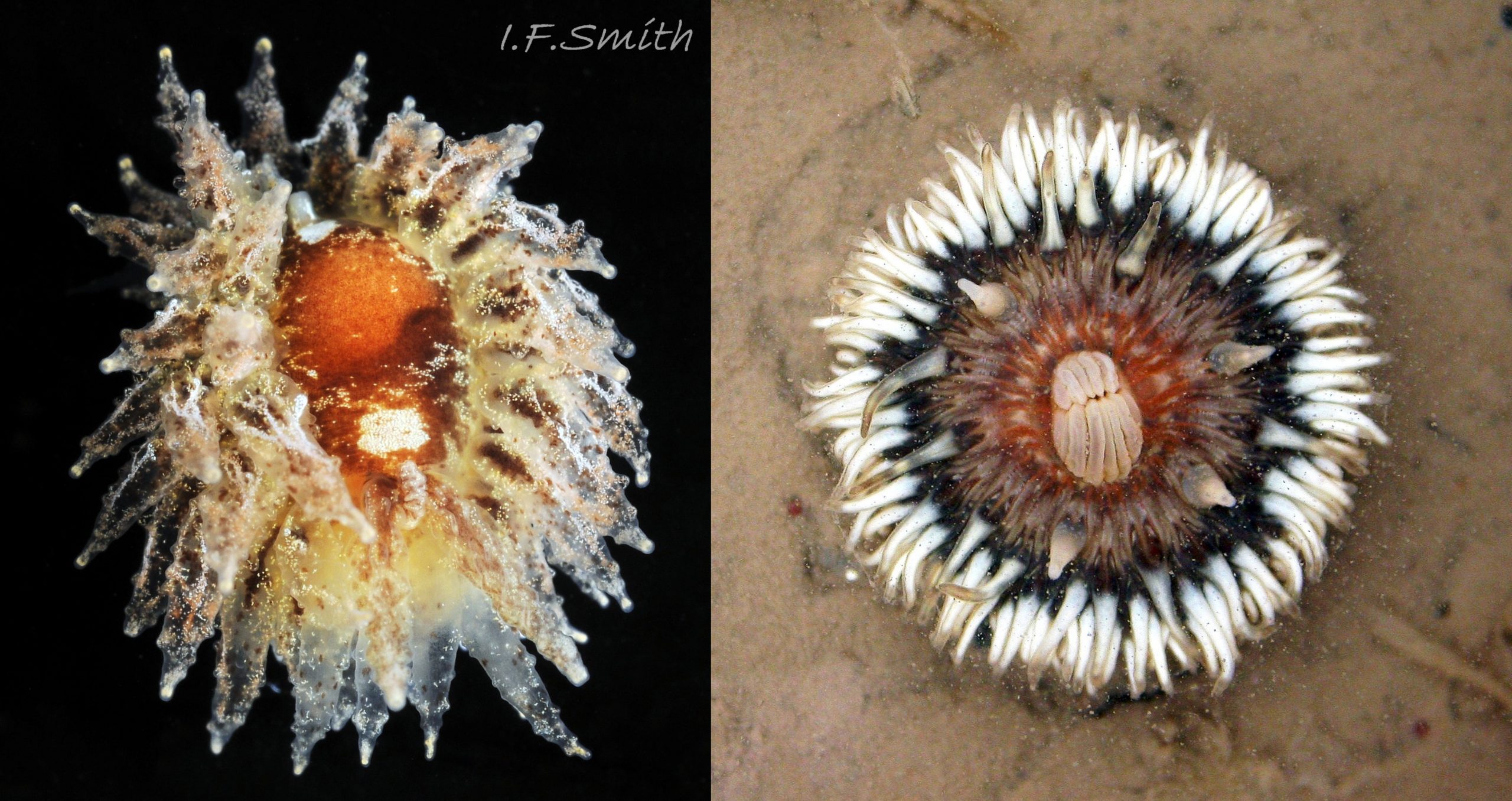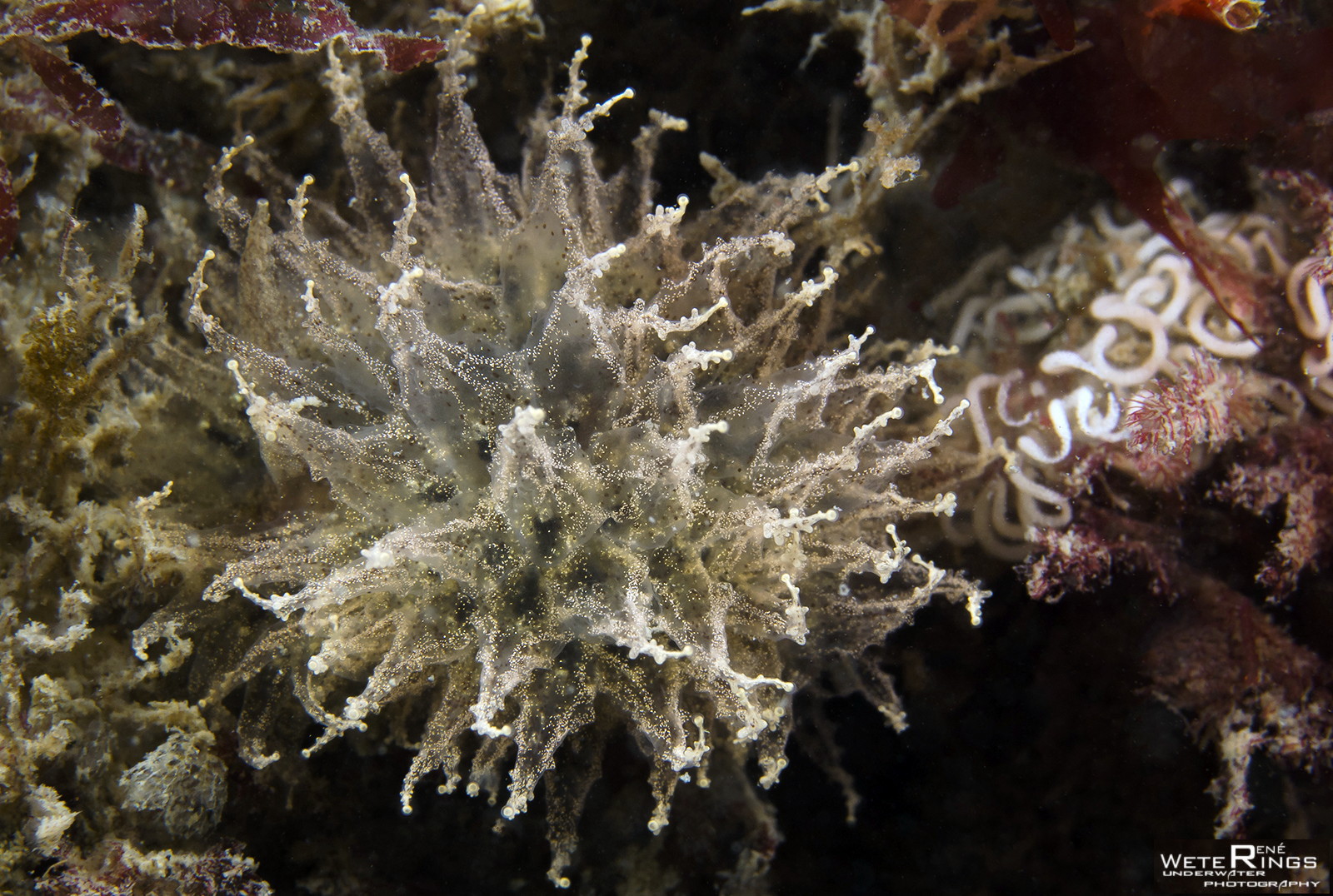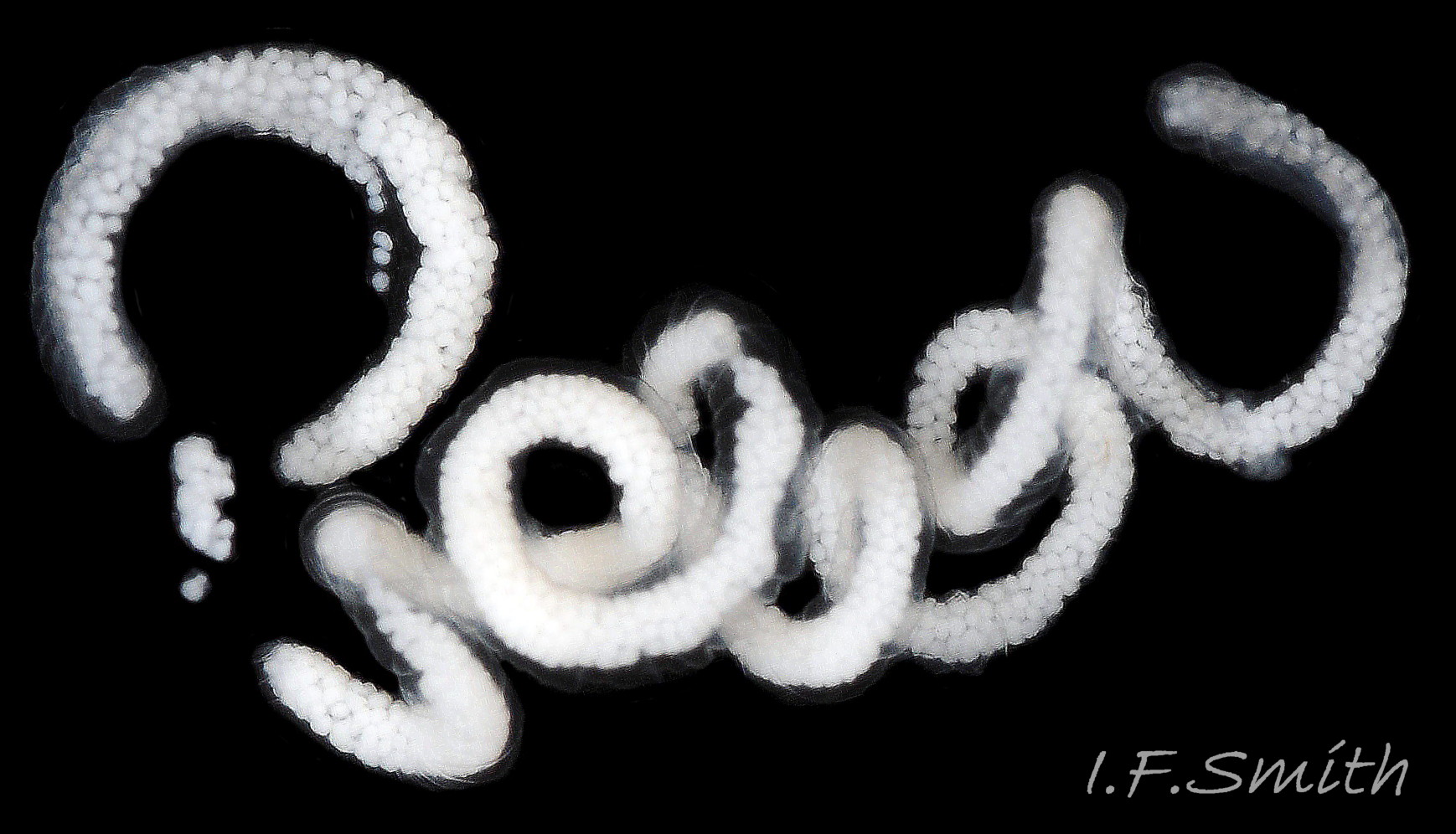Click image to enlarge with full caption. Main text below slider.
Janolus hyalinus (Alder & Hancock, 1854).
PDF available at www.researchgate.net/publication/360276147_Janolus_hyalin…
Current taxonomy: World Register of Marine Species
www.marinespecies.org/aphia.php?p=taxdetails&id=140857
Synonyms: Antiopa hyalina Alder & Hancock, 1854.
GLOSSARY BELOW
Description
Janolus hyalinus grows up to 30 mm long. Much of the body is transparent-hyaline, hence the specific epithet, and almost invisible, showing the colour of what is behind it 01 Janolus hyalinus . The dorsum usually has a large, central patch of brown, and smaller, variable areas of it elsewhere. There are also patches and much fine stippling of opaque white 02 Janolus hyalinus . The long tubular anal papilla is near the posterior of the dorsum 01 Janolus hyalinus & 03 Janolus hyalinus .
A confusing mass of long, tapering cerata often conceals the body 04 Janolus hyalinus and make it one of the most difficult nudibranchs to find, especially when with the erect bryozoans which it preys on 05 Janolus hyalinus . Each ceras has many wart-like papillae on the surface, and one on the apex 06 Janolus hyalinus & 07 Janolus hyalinus . Externally, they are entirely transparent, shading to hyaline green basally, apart from a fine opaque white stipple, which concentrates in longitudinal white lines connecting the papillae, and a little yellowish brown on the apex. Internally, each ceras has a brown or black digestive gland extending half way up, or less, except those anterior to the rhinophores, which have no digestive gland 06 Janolus hyalinus & 11 Janolus hyalinus . When disturbed, cerata are sometimes autotomized.
The brown rhinophores 07 Janolus hyalinus & 08 Janolus hyalinus have a truncated apex and interrupted, oblique lamellae with opaque white stippling. There is a similarly coloured, sensory caruncle between the bases of the rhinophores and there is a lateral black eye at the base of each rhinophore.
The head consists of a mouth with large outer lips and a small, yellowish white anterior veil flecked with yellow and brown, which extends laterally into small oral tentacles 09 Janolus hyalinus .
The foot is broadest at the gently-rounded, bilaminate anterior which lacks propodial tentacles or projections. It narrows gradually towards the posterior until the metapodium, which tapers to a long slender point 10 Janolus hyalinus & 11 Janolus hyalinus .
The transparent sole clearly shows the internal anatomy including the buccal mass, stomach, male genitalia, ovotestes and intestine-rectum 12 Janolus hyalinus .
Key identification features
Janolus hyalinus
1) Cerata continue round anterior of head 02 Janolus hyalinus .
2) Caruncle between bases of rhinophores 08 Janolus hyalinus .
3) Many wart-like papillae on surface of cerata 02 Janolus hyalinus & 07 Janolus hyalinus .
Similar species
Antiopella cristata (Delle Chiaje, 1841) 13 Janolus hyalinus & 14 Janolus hyalinus.
1) Cerata continue round anterior of head.
2) Caruncle between bases of rhinophores
3) Surface of cerata smooth.
Proctonotus mucroniferus (Alder and Hancock, 1844). 15 Janolus hyalinus.
1) Cerata continue round anterior of head.
2) No caruncle between rhinophores.
3) Many wart-like papillae on surface of cerata.
There is no character, other than absence of caruncle and a slight variation in rhinophoral lamellae, to distinguish the extremely rarely found P. mucroniferus from J. hyalinus (Alder & Hancock 1844 – 1854).
Molecular sequencing is desirable to test the possibility of it being J. hyalinus with caruncle lost by accident or autotomy.
Habits and ecology
J. hyalinus lives on or near its erect bryozoan prey, species of Bugula and Scrupocellaria, where it is highly cryptic and difficult to discern 05 Janolus hyalinus . There is no cnidosac in the tip of the cerata 06 Janolus hyalinus because J. hyalinus is in superfamily Proctonotoidea, and its prey lacks stinging cnidocytes to store in a cnidosac for defence in the manner of aeolids feeding on Cnidaria.
It occurs at sites both of extreme exposure, such as St Kilda, Scotland, and extreme shelter, such as Lough Hyne, Ireland and Menai Strait, Wales. It has near neutral buoyancy and, sometimes, drifts contracted into a ball resembling a sea anemone 16 Janolus hyalinus . Like other nudibranchs, it is a simultaneous hermaphrodite 04 Janolus hyalinus . The spawn is a looped line of white, ovoid capsules, each of which contains many ova. Spawn has been recorded in the wild in September and November 17 Janolus hyalinus , and in captivity in May in a refrigerator at 9° C 18 Janolus hyalinus .
Distribution and status
J. hyalinus occurs from the Mediterranean to northern Scotland and southern Scandinavia, GBIF map www.gbif.org/species/2291875 . It is regarded as one of the rarest British nudibranchs (Thompson & Brown, 1984), but it is probably under-recorded because it is so cryptic and difficult to discern; it is found and photographed by divers quite often in the Oosterschelde, Netherlands 04 Janolus hyalinus and 18 Janolus hyalinus . There are scattered records from northern Scotland to the English Channel, NBN map species.nbnatlas.org/species/NBNSYS0000175922
Acknowledgements
For use of images, I gratefully thank Nick Blacker, Andrew Easton, Arne Kuilman, Stefan Verheyen and René Weterings.
References and links
Alder J. & Hancock A. (1854). Notice of some new species of British Nudibranchiata. Annals and Magazine of Natural History. ser. 2, 14: 102-105., www.biodiversitylibrary.org/page/18659561#page/119/mode/1up
Alder, J. & Hancock, A. 1845-1855. A monograph of the British nudibranchiate mollusca. London, Ray Society. Fam.3, Pl. 44. www.biodiversitylibrary.org/item/131598#page/494/mode/1up
Eliot, C.N.E. 1910. A monograph of the British nudibranchiate mollusca. London, Ray Society. Supplementary volume.
Pl. V archive.org/details/british_nudibranchiate_mollusca_pt8_l…
Thompson, T.E. & Brown, G.H. 1984. Biology of opisthobranch molluscs 2. London, Ray Society.
Glossary
autotomize = to undergo autotomy.
autotomy = the reflex separation of a body part, often triggered by disturbance, injury or threat.
Bryozoa = small, sessile invertebrates living in calcareous erect or encrusting colonies.
caruncle = fleshy excrescence like neck wattle on turkey.
cerata = (sing. ceras) lobes on dorsum of aeolids and some other seaslugs.
Cnidaria = hydroids, jellyfish, sea anemones etc. which possess cnidocytes.
cnidosac = storage space for stinging cnidocytes in the tips of cerata of Aeolidioidea www.seaslugforum.net/find/defcnid , not found in J. hyalinus.
epithet, specific = the second word in the scientific binomial name of a species.
hermaphrodite, simultaneous = individual acts as both male and female at the same time with similar partner(s).
hyaline = resembling glass in transparency or translucency.
lamellae = small plates on rhinophores, or leaflets of gill.(sing. lamella)
metapodium = hind portion of the foot. (adj. metapodial).
nudibranch = a group of seaslugs with no shell when adult in the order Nudibranchia (not all seaslugs are nudibranchs).
papilla = (pl. papillae) small protrusion of flesh.
plankton = animals and plants that drift in pelagic zone (main body of water).
propodium = anterior portion of gastropod foot. (adj. propodial).
rhinophores = chemo-receptor tentacles on top of head of nudibranch.
sessile = (adj.) of organisms living attached to substrate or other organisms.
veliger = shelled larva of marine gastropod or bivalve mollusc which swims by beating cilia of a velum (bilobed flap).
